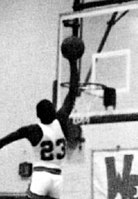Michael Jordan theme by hoopsbhoy4life
Download: MichaelJordan.p3t
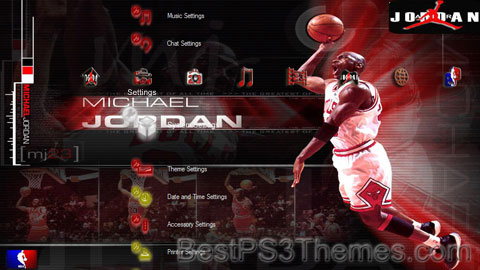
(3 backgrounds)
Michael Jeffrey Jordan (born February 17, 1963), also known by his initials MJ,[9] is an American businessman and former professional basketball player. He played fifteen seasons in the National Basketball Association (NBA) between 1984 and 2003, winning six NBA championships with the Chicago Bulls. He was integral in popularizing basketball and the NBA around the world in the 1980s and 1990s,[10] becoming a global cultural icon.[11] His profile on the NBA website states, "By acclamation, Michael Jordan is the greatest basketball player of all time."[12]
Jordan played college basketball with the North Carolina Tar Heels. As a freshman, he was a member of the Tar Heels' national championship team in 1982.[5] Jordan joined the Bulls in 1984 as the third overall draft pick[5][13] and quickly emerged as a league star, entertaining crowds with his prolific scoring while gaining a reputation as one of the best defensive players.[14] His leaping ability, demonstrated by performing slam dunks from the free-throw line in Slam Dunk Contests, earned him the nicknames "Air Jordan" and "His Airness".[5][13] Jordan won his first NBA title with the Bulls in 1991 and followed that achievement with titles in 1992 and 1993, securing a three-peat. Following the murder of his father, Jordan abruptly retired from basketball before the 1993–94 NBA season to play Minor League Baseball in the Chicago White Sox organization, but returned to the Bulls in March 1995 and led them to three more championships in 1996, 1997, and 1998, as well as a then-record 72 regular season wins in the 1995–96 NBA season.[5] He retired for the second time in January 1999, returning for two more NBA seasons from 2001 to 2003 as a member of the Washington Wizards.[5][13] Jordan was selected to play for the United States national team during his college and NBA careers, winning four gold medals—at the 1983 Pan American Games, 1984 Summer Olympics, 1992 Tournament of the Americas and 1992 Summer Olympics—while also being undefeated.[15]
Jordan's individual accolades include six NBA Finals Most Valuable Player (MVP) awards, ten NBA scoring titles (both all-time records), five NBA MVP awards, ten All-NBA First Team designations, nine All-Defensive First Team honors, fourteen NBA All-Star Game selections, three NBA All-Star Game MVP awards, three NBA steals titles, and the 1988 NBA Defensive Player of the Year Award.[13] He holds the NBA records for career regular season scoring average (30.1 points per game) and career playoff scoring average (33.4 points per game).[16] In 1999, he was named the 20th century's greatest North American athlete by ESPN and was second to Babe Ruth on the Associated Press' list of athletes of the century.[5] Jordan was twice inducted into the Naismith Memorial Basketball Hall of Fame, once in 2009 for his individual career,[17] and again in 2010 as part of the 1992 United States men's Olympic basketball team ("The Dream Team").[18] He became a member of the United States Olympic Hall of Fame in 2009,[19] a member of the North Carolina Sports Hall of Fame in 2010,[20] and an individual member of the FIBA Hall of Fame in 2015 and a "Dream Team" member in 2017.[21][22] Jordan was named to the NBA 50th Anniversary Team in 1996 and to the NBA 75th Anniversary Team in 2021.[23] The trophy for the NBA Most Valuable Player Award is named in his honor.
One of the most effectively marketed athletes of his generation, Jordan made many product endorsements.[10][24] He fueled the success of Nike's Air Jordan sneakers, which were introduced in 1984 and remain popular.[25] He starred as himself in the live-action/animation hybrid film Space Jam (1996) and was the central focus of the Emmy-winning documentary series The Last Dance (2020). He became part-owner and head of basketball operations for the Charlotte Hornets (then named the Bobcats) in 2006 and bought a controlling interest in 2010, before selling his majority stake in 2023. He is also the owner of 23XI Racing in the NASCAR Cup Series. In 2016, he officially became the first billionaire player in NBA history.[26] That year, President Barack Obama awarded him the Presidential Medal of Freedom.[27] As of 2024, his net worth is estimated at $3.2 billion by Forbes.[28]
Early life[edit]
Michael Jeffrey Jordan was born at Cumberland Hospital in Brooklyn, New York City, on February 17, 1963,[29] to bank employee Deloris (née Peoples) and equipment supervisor James R. Jordan Sr.[29][30] He has two older brothers, James Jr. and basketball player Larry, as well as an older sister named Deloris and a younger sister named Roslyn.[31][32] Jordan and his siblings were raised in the Methodist faith.[33]
In 1968, the family moved to Wilmington, North Carolina.[34] Jordan attended Emsley A. Laney High School, where he highlighted his athletic career by playing basketball, baseball, and football. He tried out for the basketball varsity team during his sophomore year, but at a height of 5 feet 11 inches (1.80 m), he was deemed too short. His taller friend Harvest Leroy Smith was the only sophomore to make the team.[35][36] Motivated to prove his worth, Jordan became the star of Laney's junior varsity team and tallied some 40-point games.[35] The following summer, he grew four inches (10 cm) and trained rigorously.[36] Upon earning a spot on the varsity roster, he averaged more than 25 points per game (ppg) over his final two seasons of high school play.[37] As a senior, he was selected to play in the 1981 McDonald's All-American Game and scored 30 points,[38][39] after averaging 27 ppg,[37] 12 rebounds (rpg),[40][41] and six assists per game (apg) for the season.[41][42][43]
He was recruited by numerous college basketball programs, including Duke, North Carolina, South Carolina, Syracuse, and Virginia.[44] In 1981, he accepted a basketball scholarship to the University of North Carolina at Chapel Hill, where he majored in cultural geography.[45] He chose this field of study because of its relationship to meteorology, as he was interested in a career as a meteorologist.[46][47]
College career[edit]
As a freshman in coach Dean Smith's team-oriented system, Jordan was named ACC Freshman of the Year after he averaged 13.4 ppg on 53.4% shooting (field goal percentage).[48] He made the game-winning jump shot in the 1982 NCAA Championship game against Georgetown, which was led by future NBA rival Patrick Ewing.[49] Jordan later described this shot as the major turning point in his basketball career.[50][51] During his three seasons with the Tar Heels, he averaged 17.7 ppg on 54.0% shooting and added 5.0 rpg and 1.8 apg.[13]
Jordan was selected by consensus to the NCAA All-American First Team in both his sophomore (1983) and junior (1984) seasons.[52][53] After winning the Naismith and the Wooden College Player of the Year awards in 1984, Jordan left North Carolina one year before his scheduled graduation to enter the 1984 NBA draft. Jordan returned to North Carolina to complete his degree in 1986,[54] when he graduated with a Bachelor of Arts degree in geography.[55][56] In 2002, Jordan was named to the ACC 50th Anniversary men's basketball team honoring the 50 greatest players in ACC history.[57]
Professional career[edit]
Chicago Bulls (1984–1993; 1995–1998)[edit]
Early NBA years (1984–1987)[edit]
The Chicago Bulls selected Jordan with the third overall pick of the 1984 NBA draft after Hakeem Olajuwon (Houston Rockets) and Sam Bowie (Portland Trail Blazers). One of the primary reasons why Jordan was not drafted sooner was because the first two teams were in need of a center.[58] Trail Blazers general manager Stu Inman contended that it was not a matter of drafting a center but more a matter of taking Bowie over Jordan, in part because Portland already had Clyde Drexler, who was a guard with similar skills to Jordan.[59] Citing Bowie's injury-laden college career, ESPN named the Blazers' choice of Bowie as the worst draft pick in North American professional sports history.[60]
Jordan made his NBA debut at
Clemson (Updated)
Clemson theme by Bryan Cox
Download: ClemsonUpdated.p3t
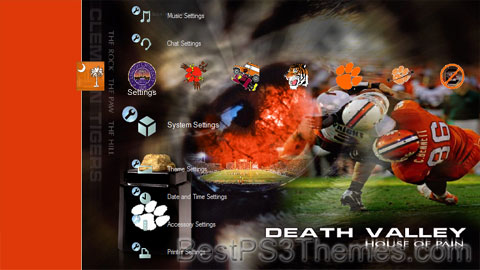
(14 backgrounds)
P3T Unpacker v0.12
Copyright (c) 2007. Anoop Menon
This program unpacks Playstation 3 Theme files (.p3t) so that you can touch-up an existing theme to your likings or use a certain wallpaper from it (as many themes have multiple). But remember, if you use content from another theme and release it, be sure to give credit!
Download for Windows: p3textractor.zip
Instructions:
Download p3textractor.zip from above. Extract the files to a folder with a program such as WinZip or WinRAR. Now there are multiple ways to extract the theme.
The first way is to simply open the p3t file with p3textractor.exe. If you don’t know how to do this, right click the p3t file and select Open With. Alternatively, open the p3t file and it will ask you to select a program to open with. Click Browse and find p3textractor.exe from where you previously extracted it to. It will open CMD and extract the theme to extracted.[filename]. After that, all you need to do for any future p3t files is open them and it will extract.
The second way is very simple. Just drag the p3t file to p3textractor.exe. It will open CMD and extract the theme to extracted.[filename].
For the third way, first put the p3t file you want to extract into the same folder as p3textractor.exe. Open CMD and browse to the folder with p3extractor.exe. Enter the following:
p3textractor filename.p3t [destination path]Replace filename with the name of the p3t file, and replace [destination path] with the name of the folder you want the files to be extracted to. A destination path is not required. By default it will extract to extracted.filename.
PSG
PSG theme by spide77
Download: PSG.p3t
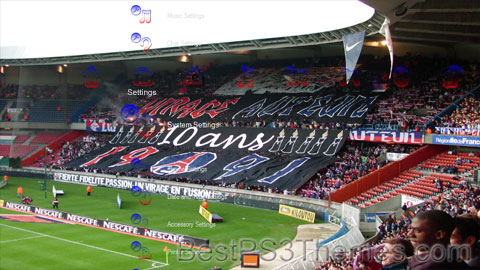
(9 backgrounds)
Redirect to:
This page is a redirect. The following categories are used to track and monitor this redirect:
|
Yid Army!
Yid Army! theme by David Maher
Download: YidArmy.p3t
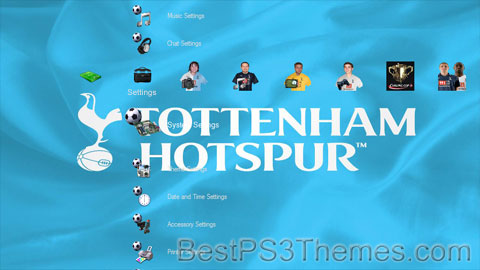
(4 backgrounds)
P3T Unpacker v0.12
Copyright (c) 2007. Anoop Menon
This program unpacks Playstation 3 Theme files (.p3t) so that you can touch-up an existing theme to your likings or use a certain wallpaper from it (as many themes have multiple). But remember, if you use content from another theme and release it, be sure to give credit!
Download for Windows: p3textractor.zip
Instructions:
Download p3textractor.zip from above. Extract the files to a folder with a program such as WinZip or WinRAR. Now there are multiple ways to extract the theme.
The first way is to simply open the p3t file with p3textractor.exe. If you don’t know how to do this, right click the p3t file and select Open With. Alternatively, open the p3t file and it will ask you to select a program to open with. Click Browse and find p3textractor.exe from where you previously extracted it to. It will open CMD and extract the theme to extracted.[filename]. After that, all you need to do for any future p3t files is open them and it will extract.
The second way is very simple. Just drag the p3t file to p3textractor.exe. It will open CMD and extract the theme to extracted.[filename].
For the third way, first put the p3t file you want to extract into the same folder as p3textractor.exe. Open CMD and browse to the folder with p3extractor.exe. Enter the following:
p3textractor filename.p3t [destination path]Replace filename with the name of the p3t file, and replace [destination path] with the name of the folder you want the files to be extracted to. A destination path is not required. By default it will extract to extracted.filename.
NBA Greatest
NBA Greatest theme by Flex
Download: NBAGreatest.p3t
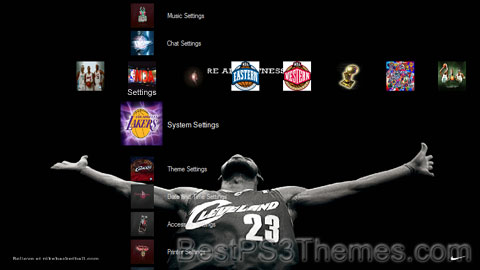
(16 backgrounds)
P3T Unpacker v0.12
Copyright (c) 2007. Anoop Menon
This program unpacks Playstation 3 Theme files (.p3t) so that you can touch-up an existing theme to your likings or use a certain wallpaper from it (as many themes have multiple). But remember, if you use content from another theme and release it, be sure to give credit!
Download for Windows: p3textractor.zip
Instructions:
Download p3textractor.zip from above. Extract the files to a folder with a program such as WinZip or WinRAR. Now there are multiple ways to extract the theme.
The first way is to simply open the p3t file with p3textractor.exe. If you don’t know how to do this, right click the p3t file and select Open With. Alternatively, open the p3t file and it will ask you to select a program to open with. Click Browse and find p3textractor.exe from where you previously extracted it to. It will open CMD and extract the theme to extracted.[filename]. After that, all you need to do for any future p3t files is open them and it will extract.
The second way is very simple. Just drag the p3t file to p3textractor.exe. It will open CMD and extract the theme to extracted.[filename].
For the third way, first put the p3t file you want to extract into the same folder as p3textractor.exe. Open CMD and browse to the folder with p3extractor.exe. Enter the following:
p3textractor filename.p3t [destination path]Replace filename with the name of the p3t file, and replace [destination path] with the name of the folder you want the files to be extracted to. A destination path is not required. By default it will extract to extracted.filename.
Rouge
Rouge theme by Loic
Download: Rouge.p3t
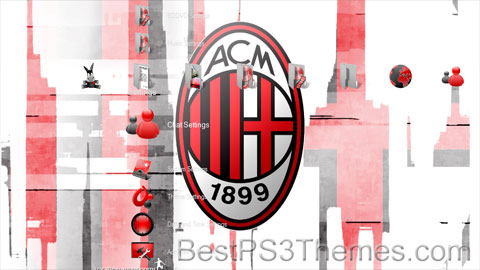
(1 background)
Rouge is the French word for "red" and may refer to:
Compounds[edit]
- Rouge (cosmetics), a cosmetic used to color the cheeks and emphasize the cheekbones
- Jeweler's rouge or iron(III) oxide
- Rouging, a form of corrosion applicable to stainless steel
People and characters[edit]
- Adrien de Rougé (1782-1838), French statesman
- Aurélie Rouge (born 1992), Martiniquais footballer
- Caesar Rougé (born 2002), French footballer
- Emmanuel de Rougé (1811-1872), French Egyptologist
- Guillaume le Rouge (1385-1450), Dutch musician
- Rouge (rapper), South African female rapper
- Roger Rouge (born 1914), Swiss sailor
Characters[edit]
- Rouge (Power Stone), a character in Power Stone media
- Rouge (Ranma½), a character in Ranma ½ media
- Rouge the Bat, a character in Sonic the Hedgehog media
- Rouge, the titular character from the 2016 Chinese TV show Rookie Agent Rouge
- Cure Rouge, the magical girl alias of Rin Natsuki from Yes! PreCure 5
- Riana Rouge, the titular character from the adult action adventure game Riana Rouge
- Madame Rouge, a DC Comics supervillainess
Places[edit]
- Rõuge, a settlement in Estonia
- Rõuge Parish, Estonia
- Rouge, Toronto, Ontario, Canada; a neighbourhood in Toronto
- Rougé, Châteaubriant, Châteaubriant-Ancenis, Loire-Atlantique, Pays de la Loire, France
- La Rouge, Val-au-Perche, Ceton, Mortagne-au-Perche, Orne, Normandy, France
- Mount Rouge, Graham Land, Antarctic Peninsula, Antarctica; a mountain
- Mont Rouge, Pennine Alps, Switzerland; a mountain
- Rouge River (disambiguation)
- Fort Rouge (disambiguation)
- Eau Rouge (Red Water), Belgium; a stream
- Zone Rouge, France; a zone of devastation after WWI
Facilities and structures[edit]
- The Rouge, Ford's production complex on the Rouge River in Dearborn, Michigan, USA
- Château Rouge, Bas-Oha, Wanze, Liège Province, Wallonia, Belgium; a chateau
- Eau Rouge corner, Spa-Francorchamps racetrack, Belgium; from the Belgian Grand Prix
- Rouge National Urban Park, Ontario, Canada
Media[edit]
- Rouge FM, a Canadian French-language radio network
- Rouge (newspaper), a weekly newspaper published by the Revolutionary Communist League in France
Film and television[edit]
- Rouge (film), a 1988 Hong Kong film
- Rouge (film journal), an online film journal
- Rouge (TV series), an MTV series about an Asian girl band
Music[edit]
- La Rouge (tour), a concert tour by Red Velvet
- Bands
- Rouge (German duo), an offshoot of the group Arabesque
- Rouge (group), a Brazilian girl group (2002–2006, 2017–2019)
- Rouge, an American band performing with Desmond Child
- Albums
- Rouge (Rouge album), a 2002 album by pop group Rouge
- Rouge (Fredericks Goldman Jones album), 1993
- Rouge (Louis Sclavis Quintet album), 1992
- Rouge (Yuna album), a 2019 album by the Malaysian singer Yuna
- La Rouge (album), a 2005 album by Torngat
- Songs
- "Rouge" (song), by Naomi Chiaki and covered by various artists
- "Rouge", a song on Miles Davis' 1957 album Birth of the Cool
Organizations, groups, companies[edit]
- Air Canada Rouge, a discount airline subsidiary of Air Canada
- Parti rouge, an 1800s political party of Quebec
- Café Rouge, a British restaurant chain
Sport[edit]
- Rouge (football) or single, a score of one point in Canadian football
- Rouge, better known as Rush (wrestler) (born 1988), Mexican professional
- A method of scoring in the Eton field game
- A historical method of scoring in Sheffield Rules football
Other uses[edit]
- ROUGE (metric), an evaluation metric used in natural language processing
- Rouge de l'Ouest, a breed of sheep
- Rivina humilis, the rouge plant
See also[edit]
- All pages with titles beginning with Rouge
- All pages with titles containing Rouge
- Rouging
- Red (disambiguation)
- Rougemont (disambiguation) and Rougemount
- Cap-Rouge (disambiguation) (French: Cape Rouge, lit. 'Cape Red')
- Morne Rouge (disambiguation) (French: Rouge Hill, lit. 'Red Hill')
- Moulin Rouge (disambiguation) (French: Rouge Mill, lit. 'Red Mill')
- Maison Rouge (disambiguation) (French: Rouge House, lit. 'Red House'
Oakland Raiders
Oakland Raiders theme by acm
Download: OaklandRaiders.p3t
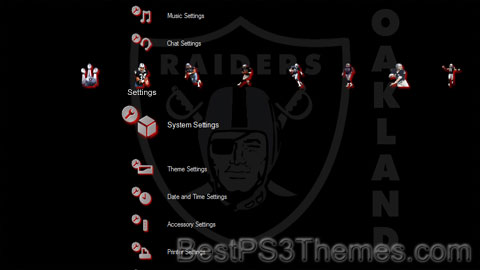
(1 background)
| Oakland Raiders | |||
|---|---|---|---|
| Established 1960 Ended 2019 Played in Oakland, California Headquartered in Alameda, California | |||
| |||
| League/conference affiliations | |||
American Football League (1960–1969)
National Football League (1970–2019)
| |||
Uniform | |||
| Team colors | Silver, black | ||
| Fight song | The Autumn Wind | ||
| Mascot | Raider Rusher | ||
| Personnel | |||
| Owner(s) | Chet Soda (1960) F. Wayne Valley (1961–1971) Ed McGah (1966–1971) Co-Owner Al Davis (1966–2011) Mark Davis (2011–Present) | ||
| General manager | Chet Soda (1960) Paul Hastings (1961) Wes Fry (1962) Al Davis (1963–2010) Hue Jackson (2011) Reggie McKenzie (2012–2018) Mike Mayock (2019) | ||
| Head coach | Eddie Erdelatz (1960–1961) Marty Feldman (1961–1962) Red Conkright (1962) Al Davis (1963–1965) John Rauch (1966–1968) John Madden (1969–1978) Tom Flores (1979–1981) Mike White (1995–1996) Joe Bugel (1997) Jon Gruden (1998–2001) Bill Callahan (2002–2003) Norv Turner (2004–2005) Art Shell (2006) Lane Kiffin (2007–2008) Tom Cable (2008–2010) Hue Jackson (2011) Dennis Allen (2012–2014) Tony Sparano (2014) Jack Del Rio (2015–2017) Jon Gruden (2018–2019) | ||
| Team history | |||
| |||
| Team nicknames | |||
| |||
| Championships | |||
League championships (2†)
| |||
| Conference championships (3) | |||
| Division championships (12) † – Does not include the AFL or NFL championships won during the same seasons as the AFL–NFL Super Bowl championships prior to the 1970 AFL–NFL merger | |||
| Playoff appearances (15) | |||
| Home fields | |||
| |||
| This article is part of series of |
| Las Vegas Raiders history |
|---|
| Oakland Raiders (1960–1981) |
| Los Angeles Raiders (1982–1994) |
| Oakland Raiders (1995–2019) |
| Relocation to Las Vegas |
| Las Vegas Raiders (2020–present) |
| List of seasons |
The Oakland Raiders were a professional American football team that played in Oakland from its founding in 1960 to 1981 and again from 1995 to 2019 before relocating to the Las Vegas metropolitan area where they now play as the Las Vegas Raiders. Between 1982 and 1994, the team played in Los Angeles as the Los Angeles Raiders.
The team's first home game was at Kezar Stadium in San Francisco, against the Houston Oilers on September 11, 1960, with a 37–22 loss. They played their last game as an Oakland-based team on December 29, 2019, a game which they lost 16–15 to make them finish 3rd in the AFC West, eliminate them from playoff contention, and suffer a late-season collapse after starting with a 6–4 record.
Early years (1960–1962)[edit]

A few months after the inaugural American Football League draft in 1959, the owners of the yet-unnamed Minneapolis franchise accepted an offer to join the established National Football League as an expansion team (now called the Minnesota Vikings) in 1961, sending the AFL scrambling for a replacement.[2][3] At the time, Oakland seemed an unlikely venue for a professional football team. The city had not asked for a team, there was no ownership group and there was no stadium in Oakland suitable for pro football (the closest stadiums were in Berkeley and San Francisco) and there was already a successful NFL franchise in the Bay Area in the San Francisco 49ers. However, the AFL owners selected Oakland after Los Angeles Chargers owner Barron Hilton threatened to forfeit his franchise unless a second team was placed on the West Coast.[4] Accordingly, the city of Oakland was awarded the eighth AFL franchise on January 30, 1960, and the team inherited the Minneapolis club's draft picks.
Upon receiving the franchise, a meeting of local civic leaders and businessmen was called, chaired by former United States Senator William Fife Knowland, editor of the Oakland Tribune; Edgar Kaiser of Kaiser Steel; developer Robert T. Nahas; and Oakland City Councilman Robert Osborne. Also attending the meeting were Oakland Mayor Clifford E. Rishell; City Councilmen Frank J. Youell, Felix Chialvo, Glenn E. Hoover, Fred Maggiora, John C. Houlihan, Dan Marovich, and Howard E. Rilea; Alameda County Board of Supervisors President Kent D. Pursel; and County Supervisors Emanuel P. Razeto, Leland W. Sweeney, and Francis Dunn. The gathering found a number of businessmen willing to invest in the new team. A limited partnership was formed to own the team headed by managing general partner Y. Charles (Chet) Soda, a local real estate developer, and included general partners Ed McGah, Oakland City Councilman Robert Osborne, F. Wayne Valley, restaurateur Harvey Binns, 1928 Olympic gold medalist Donald Blessing, and contractor Charles Harney, the builder of San Francisco's Candlestick Park, built on a bleak parcel of land he owned; the road leading to the stadium is known as Harney Way.
A "name the team" contest was held by the Oakland Tribune, and the winner was announced April 4, 1960, as the Oakland Señors.[5] After a few days of being the butt of local jokes (and accusations that the contest was fixed, as Soda was fairly well known within the Oakland business community for calling his acquaintances "señor"), the fledgling team (and its owners) changed the team's name nine days later[6] to the Oakland Raiders, which had finished third in the naming contest.[7] The original team colors were black, gold and white. The now-familiar team emblem of a pirate (or "raider") wearing a football helmet was created, reportedly a rendition of actor Randolph Scott.[8]
Oakland Raiders games were broadcast locally on KNBC (680 AM; the station later became KNBR), with Bud (Wilson Keene) Foster handling play-by-play and Mel Venter providing color analysis. Foster, the "Voice of the California Golden Bears", had a long career in radio, 1945–1955 as the "Voice of the Oakland Oaks" of the defunct Pacific Coast League; Foster was the first 1946–1949, 1951–1953, "Voice of the San Francisco 49ers".[9] After the 1962 season, Foster would only call CAL (University of California at Berkeley) football until his retirement. Raider games, 1963–1965 were heard on KDIA 1410 AM, with Bob Blum and Dan Galvin. In 1966. KGO Radio 810 signed a contract with the Oakland Raiders. Bill King was hired for the play-by-play and Scotty Stirling (an Oakland Tribune sportswriter) was color commentator.
1960[edit]
When the University of California refused to let the Raiders play home games at Memorial Stadium in Berkeley, they chose Kezar Stadium in San Francisco as their home field. The team's first regular season home game was played on September 11, 1960, a 37–22 loss to the Houston Oilers.
The Raiders were allowed to move to Candlestick Park for the final three home games of the 1960 season after gaining the approval of San Francisco's Recreation and Park Commission, marking the first time that professional football would be played at the new stadium.[10] The change of venue, however, failed to attract larger crowds for the Raiders during their time at Candlestick Park, with announced attendance of 12,061 (vs. the Chargers in a 41–17 loss on December 4), 9,037 (vs. the New York Titans in a 31–28 loss on December 11) and 7,000 (estimated, vs. the Broncos in a 48–10 victory to close out the season on December 17) at Candlestick.
The Raiders finished their first campaign with a 6–8 record, and lost $500,000, equivalent to $5.15 million in 2023. Desperately in need of money to continue running the team, Valley received a $400,000 loan from Buffalo Bills founder Ralph Wilson, equivalent to $4.12 million in 2023.[11]
1961–1962[edit]
After the conclusion of the first season Soda dropped out of the partnership, and on January 17, 1961, Valley, McGah and Osborne bought out the remaining four general partners. Soon after, Valley and McGah purchased Osborne's interest, with Valley named as the managing general partner. After splitting the previous home season between Kezar and Candlestick, the Raiders moved exclusively to Candlestick Park in 1961, where total attendance for the season was about 50,000, and finished 2–12. Valley threatened to move the Raiders out of the area unless a stadium was built in Oakland, but in 1962 the Raiders moved into 18,000-seat Frank Youell Field (later expanded to 22,000 seats), their first home in Oakland.[12] It was a temporary home for the team while the Oakland–Alameda County Coliseum was under construction. Under Marty Feldman and Red Conkright—the team's second and third head coaches since entering the AFL—the Raiders finished 1–13 in 1962, losing their first 13 games (and making for a 19–game losing streak from 1961 and 1962) before winning the season finale, and attendance remained low.
Oakland, the AFL, and Al Davis (1963–1969)[edit]
1963–1966[edit]
After the 1962 season, Valley hired Al Davis, a former assistant coach of the San Diego Chargers, as head coach and general manager. At 33, he was the youngest person in over 30 years to hold the position of head coach, and the youngest person ever to hold the position of general manager, in professional football.[13] Davis immediately changed the team colors to silver and black, and began to implement what he termed the "vertical game", an aggressive offensive strategy based on the West Coast offense developed by Chargers head coach Sid Gillman.[14] Under Davis the Raiders improved to 10–4, and he was named the AFL's Coach of the Year in 1963. Though the team slipped to 5–7–2 in 1964, it rebounded to an 8–5–1 record in 1965. He also initiated the use of team slogans such as "Pride and Poise", "Commitment to Excellence", and "Just Win, Baby"—all of which are registered trademarks.[15][16][17]
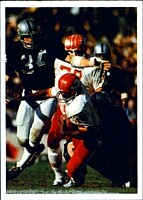
In April 1966, Davis left the Raiders after being named AFL Commissioner. Two months later, the league announced its merger with the NFL. With the merger, the position of commissioner was no longer needed, and Davis entered into discussions with Valley about returning to the Raiders. On July 25, 1966, Davis returned as part-owner of the team. He purchased a 10 percent interest in the team for US$18,000, equivalent to $169,034 in 2023, and became the team's third general partner—the partner in charge of football operations.[18][19]
1967–1969[edit]
On the field, the team Davis had assembled and coached steadily improved. With John Rauch (Davis's hand-picked successor) as head coach, the Raiders won the 1967 AFL Championship, defeating the Houston Oilers 40–7. The win earned the team a trip to Super Bowl II, where they were beaten 33–14 by Vince Lombardi's Green Bay Packers. The following two years, the Raiders again won Western Division titles, only to lose the AFL Championship to the eventual Super Bowl winners—the New York Jets (1968) and Kansas City Chiefs (1969).
John Madden becomes head coach[edit]
In 1969, John Madden became the team's sixth head coach, and under him the Raiders became one of the most successful franchises in the NFL, winning six division titles during the 1970s. It was during this period that the Raiders forged an image as a team of tough, take-no-prisoners players—such as future Hall of Fame offensive linemen Jim Otto, Gene Upshaw, and Art Shell; linebacker Ted ("the Stork") Hendricks; defensive end Ben Davidson; and cornerback Willie Brown—who would occasionally cross the line into dirty play. Those teams also featured an additional foursome of future Hall of Fame players in tight end Dave Casper, kicker George Blanda, and wide receiver Fred Biletnikoff, as well as fiery quarterback Ken ("the Snake") Stabler.[20]
AFL–NFL merger and era of success (1970–1981)[edit]
1970–1971[edit]
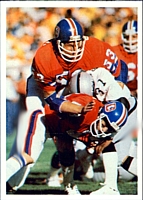
In 1970, the AFL–NFL merger took place and the Raiders became part of the Western Division of the American Football Conference in the newly merged NFL. The first post-merger season saw the Raiders win the AFC West with an 8–4–2 record and go all the way to the conference championship, where they lost to the Colts. Despite another 8–4–2 season in 1971, the Raiders failed to win the division or achieve a playoff berth.
1972–1978[edit]
In 1972, with Wayne Valley out of the country for several weeks attending the Olympic Games in Munich, Davis's attorneys drafted a revised partnership agreement that gave him total control over all of the Raiders' operations. McGah, a supporter of Davis, signed the agreement. Under partnership law, by a 2–1 vote of the general partners, the new agreement was thus ratified. Valley was furious when he discovered this, and immediately filed suit to have the new agreement overturned, but the court sided with Davis and McGah. That year would see the team achieve a 10–3–1 record and another division title. In the divisional round of the playoffs, they were beaten by the Steelers 13–7 on a play that would later be known as the Immaculate Reception.
With a record of 9–4–1 in 1973, the Raiders reached the AFC Championship, but lost 27–10 to the Dolphins.
In 1974, Oakland had a 12–2 regular season, which included a nine-game winning streak. They beat the Dolphins in the divisional round of the playoffs in a see-saw battle before falling to the Steelers in the AFC Championship. The playoff game against the Dolphins is known in NFL lore as the Sea of Hands game in which running back Clarence Davis caught a late 4th-quarter touchdown amid three Miami defenders to win 28–26 and end the Dolphins' chances of a three-peat and a fourth consecutive Super Bowl appearance.

In the 1975 season opener, the Raiders beat Miami and ended the Dolphins' 31-game home winning streak. With an 11–3 record, they defeated Cincinnati in the divisional playoff round, but again fell to the Steelers in the conference championship.
In 1976, Valley sold his interest in the team, and Davis—who now owned only 25 percent of the Raiders—was firmly in charge.[18][21] The Raiders beat Pittsburgh in a revenge match on the season opener and continued to cement their reputation for hard, dirty play by knocking WR Lynn Swann out for two weeks in a helmet-to-helmet collision. Al Davis later tried to sue Steelers coach Chuck Noll for libel after the latter called safety George Atkinson a criminal for the hit. The Raiders won 13 regular season games and a close victory over New England (the only team to beat them in the regular season) in the first round of the playoffs. They then knocked out the injury-plagued Steelers in the AFC Championship to go to Super Bowl XI. Oakland's opponent was the Minnesota Vikings, a team that had lost three previous Super Bowls. The Raiders led 16–0 at halftime. By the end, forcing their opponent into multiple turnovers, they won 32–14 for their first post-merger championship.
The following season saw the Raiders finish 11–3, but lose the division title to 12–2 Denver. They settled for a wild card playoff berth, beating the
Raiders theme by Logic Download: Raiders.p3t Redirect to: Glasgow Rangers 2.0 theme by rfc2007 Download: GlasgowRangers2.0.p3t P3T Unpacker v0.12 This program unpacks Playstation 3 Theme files (.p3t) so that you can touch-up an existing theme to your likings or use a certain wallpaper from it (as many themes have multiple). But remember, if you use content from another theme and release it, be sure to give credit! Download for Windows: p3textractor.zip Instructions: Download p3textractor.zip from above. Extract the files to a folder with a program such as WinZip or WinRAR. Now there are multiple ways to extract the theme. The first way is to simply open the p3t file with p3textractor.exe. If you don’t know how to do this, right click the p3t file and select Open With. Alternatively, open the p3t file and it will ask you to select a program to open with. Click Browse and find p3textractor.exe from where you previously extracted it to. It will open CMD and extract the theme to extracted.[filename]. After that, all you need to do for any future p3t files is open them and it will extract. The second way is very simple. Just drag the p3t file to p3textractor.exe. It will open CMD and extract the theme to extracted.[filename]. For the third way, first put the p3t file you want to extract into the same folder as p3textractor.exe. Open CMD and browse to the folder with p3extractor.exe. Enter the following: Everybody’s Golf theme by nosfe59400 Download: EverybodysGolf.p3t
Everybody's Golf, known in Japan as Minna no Golf[a] and formerly known as Hot Shots Golf in North America, is a series of golf video games created by Camelot Software Planning and published by Sony Interactive Entertainment for the PlayStation series of video game consoles. The series has a humorous take on the game of golf that includes cartoon-like and anime-like characters and modes such as miniature golf paired with a realistic engine and precise ball physics.
Seven main games in the series have been published between 1997 and 2017 for every home console in the PlayStation brand, excluding the PlayStation 5. Another four spin-off editions (which include a similarly themed tennis game and various portable console versions) have been published for PlayStation Portable and PlayStation Vita platforms. The most recent title in the series is Everybody's Golf, released in August 2017. As of March 2017, the series had sold more than 14 million copies worldwide.[1]
Everybody's Golf has several modes—including Tournament, Training, Stroke Play, and Match Play—as well as a Miniature Golf course. [citation needed] The game features several unlockable characters that can be earned by defeating them.[24] The player gains experience points for their character by winning tournaments and hitting a variety of shots. These points are used to open new courses. Everybody's Golf features six different courses and a free-moving game camera. [citation needed]
The sequel Everybody's Golf 2 brings some improvements over the original, such as more realistic character models, which differed from the anime-style characters seen in the original game.[citation needed]
Everybody's Golf 2 also includes several game modes including Stroke, Match, and Tournament play, as well as Versus, through which new characters can be unlocked. Gameplay itself is a version of the standard '3 click' variety used by the majority of golf games.[citation needed]
This is the first game in the series to include characters from other games: Sweet Tooth from Twisted Metal, Sir Daniel Fortesque from MediEvil, and Gex from the Gex video game series. This set of characters exclusively appeared in the American and European versions.[citation needed]
The third installment to the series has similar but refined visuals. The game features the same '3 click' system for hitting the ball as its predecessor.[citation needed] The game sold over one million copies worldwide.[25]
John Daly is an unlockable golfer in this game, which makes him the first real-life golfer to appear in the series. He appears only in the American release.[citation needed]
This game contains more realistic physics and better graphics. [citation needed] In addition, the game introduced online play with the Network Adaptor. [citation needed] The developers increased the number of characters from 15 to 24, added more caddies (10 in all) and boosted the number of courses from 6 to 15. Of these, 10 are new, while five are returning favorites from the previous game. The game also features an online Tournament mode where up to 32 players can compete against each other. The North American and European versions included online play, while Japanese did not. This game has a few guest characters from other games, including Jak (as a playable character) and Daxter (as a caddie) from the Jak and Daxter series, and Ratchet (as a playable character) and Clank (as a caddie) from the Rachet & Clank series. [citation needed] The game was titled Hot Shots Golf Fore! in North America.[citation needed]
This game features three modes. The single-player game offers players the chance to unlock characters and items by competing in tournaments or by stroke play. [citation needed] Training mode lets golfers practice their skills on various courses with no pressure. The wireless multiplayer mode allows up to eight players to play a course together in various head-to-head matches, real-time tournaments, or the new putting challenge.[citation needed]
The 10 new characters can be customized with more than 250 items of clothing, accessories, clubs, and balls for a unique style. Once players gain enough to go even further under par.[clarification needed] The game was renamed Hot Shots Golf: Open Tee in North America.[citation needed]
This game has 14 characters, 5 umpires, and 11 tennis courts. [citation needed] There are 3 different modes to choose from, which are Challenge Mode, Tennis with Everybody, and Training Mode. In Challenge Mode, the players play against computer-controlled opponents in order to unlock features like alternate costumes for characters and more courts to play on. [citation needed] In Tennis with Everybody, there are play matches with 1 to 4 players. The training mode allows practice positioning and timing shots, and choosing from service, volley, smash and general practice.[clarification needed]
A small number of the characters from the previous games of the series (both American and Japanese) make cameo appearances on the courts (usually only in Singles matches). Suzuki and Gloria return as being playable characters.[citation needed]
This version sold over 150,000 copies during its first week on sale.[26] The game was renamed Hot Shots Golf: Out of Bounds in North America, and Everybody's Golf: World Tour in Europe. [citation needed]
Notably, this title came with PSP System Software version 3.96,[27] and is the only place where this firmware version can be found as it was never released online. The game was renamed Hot Shots Golf: Open Tee 2 in North America.[citation needed]
While the game was released as a UMD and PlayStation Network download in Japan and the rest of Asia, it was only a PlayStation Network release in Europe and North America (as Hot Shots Shorties in North America). This release was split into four download packs based on colours—Red, Green, Yellow, and Blue—with three games included in each. [citation needed]
The title is a 12-game minigame collection, rather than a dedicated sports titles such as previous titles in the series. Minigames include book sorting, baseball, boxing, and vegetable fighting.[28] Certain games can be played with characters from the Everybody's Golf and Tennis games. [citation needed]
Another tennis game for the PlayStation Portable. Renamed in North America as Hot Shots Tennis: Get a Grip. [citation needed]
Everybody's Golf 6 borrows courses from Everybody's Golf 4 and downloadable content was available through the PlayStation Store. Players are able to leave each other comments through the "LiveArea" system. Players are able to view the golf course using PlayStation Vita's augmented reality feature.[29] The game was renamed in North America as Hot Shots Golf: World Invitational.[citation needed]
The first Everybody's Golf title on PlayStation 4, was released worldwide in August 2017. The game marks the end of the alternate Hot Shots branding for the North American market, with the title Everybody's Golf being used worldwide.[30][31]
Sony announced an Everybody’s Golf game for Android and iOS, developed and published by its mobile subsidiary ForwardWorks (now under Sony Music Entertainment Japan). It was released only in Japan in 2017, and has not received an international release, despite the game still being supported.[32][33]
Everybody's Golf VR is a PlayStation VR title and the first virtual reality game of the series.[34] It was released worldwide in May 2019.[35]
Clap Hanz released a space for the Everybody's Golf series in the Asian, European, and Japanese versions of the PlayStation 3's online community-based service, PlayStation Home. The space was called the "Everybody's Golf Space" in Europe, the "Minna no Golf Lounge" in Japan, and the "Hot Shots Golf Lounge" in North America (using the Asian version of game's name). The space featured a Questionnaire (in Europe called "A gift from Suzuki"), which is a survey that rewards an EG Lawn Sofa, a video screen, a poster, seats for the avatars, and a Full Game Launching Support feature for Everybody's Golf 5. Game Launching is a feature that lets users set up a game in PlayStation Home and launch directly into the game from Home. The space was released on 11 December 2008 for the Japanese version, 18 June 2009 for the European version,[36] and 1 October 2009 for the North American version. It closed when PlayStation Home closed on 31 March 2015 worldwide.[37][38]
Raiders
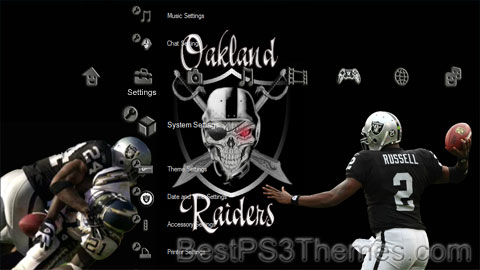
(1 background)
[[link]]s). However, do not replace these redirected links with a simpler link unless the page is updated for another reason (see WP:NOTBROKEN).Glasgow Rangers 2.0
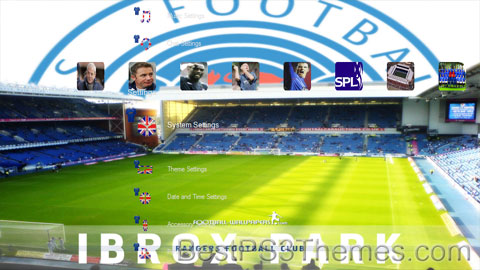
(3 backgrounds)
Copyright (c) 2007. Anoop Menon
p3textractor filename.p3t [destination path]Replace filename with the name of the p3t file, and replace [destination path] with the name of the folder you want the files to be extracted to. A destination path is not required. By default it will extract to extracted.filename.Everybody’s Golf
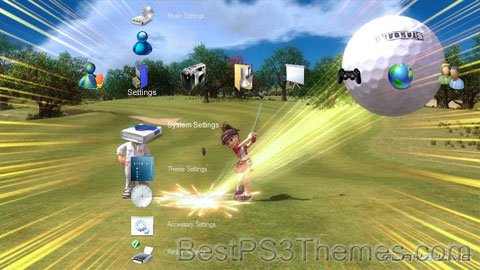
(2 backgrounds)
Everybody's Golf 
Genre(s) Sports Developer(s) Camelot Software Planning (1997–98)
Clap Hanz (1999–present)
Japan Studio (2017)
ForwardWorks (2017-present)Publisher(s) Sony Interactive Entertainment
ForwardWorks (2017)Platform(s) First release Everybody's Golf (1997)
17 July 1997Latest release Everybody’s Golf VR
21 May 2019Games[edit]
As of 1 January 2018.
Game
GameRankings
Metacritic
Everybody's Golf
(PS) 81%[2]
-
Everybody's Golf 2
(PS) 83%[3]
-
Everybody's Golf 3
(PS2) 86%[4]
(PS2) 85[5]
Everybody's Golf 4
(PS2) 80%[6]
(PS2) 80[7]
Everybody's Golf Portable
(PSP) 82%[8]
(PSP) 81[9]
Everybody's Tennis
(PS2) 70%[10]
(PS2) 70[11]
Everybody's Golf 5
(PS3) 82%[12]
(PS3) 81[13]
Everybody's Golf Portable 2
(PSP) 83%[14]
(PSP) 82[15]
Everybody's Stress Buster
(PSP) 55%[16]
-
Everybody's Tennis Portable
(PSP) 81%[17]
(PSP) 80[18]
Everybody's Golf 6
(PS3) 80%[19]
(Vita) 78%[20]
(Vita) 76[21]
Everybody's Golf
(PS4) 78%[22]
(PS4) 77[23]
Everybody's Golf (1997)[edit]
Everybody's Golf 2 (1999)[edit]
Everybody's Golf 3 (2001)[edit]
Everybody's Golf 4 (2003)[edit]
Everybody's Golf Portable (2004)[edit]
Everybody's Tennis (2006)[edit]
Everybody's Golf 5 (2007)[edit]
Everybody's Golf Portable 2 (2007)[edit]
Everybody's Stress Buster (2009)[edit]
Everybody's Tennis Portable (2010)[edit]
Everybody's Golf 6 (2011)[edit]
Everybody’s Golf (2017)[edit]
Everybody’s Golf (2017 mobile game)[edit]
Everybody’s Golf VR (2019)[edit]
PlayStation Home[edit]

Notes[edit]
References[edit]


